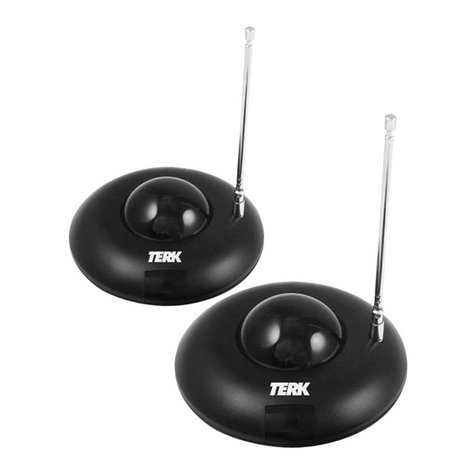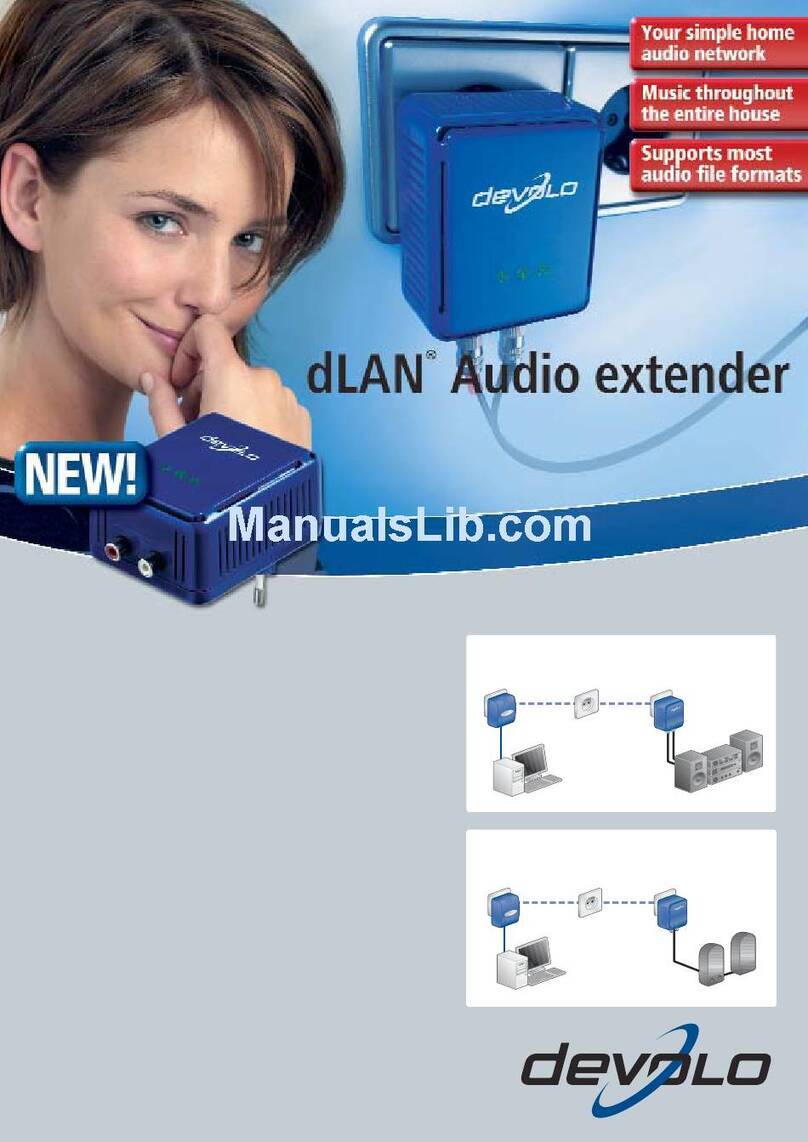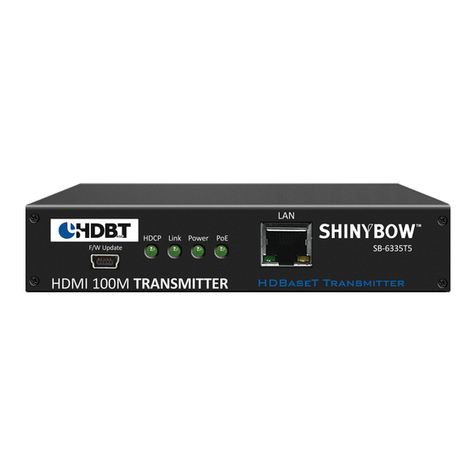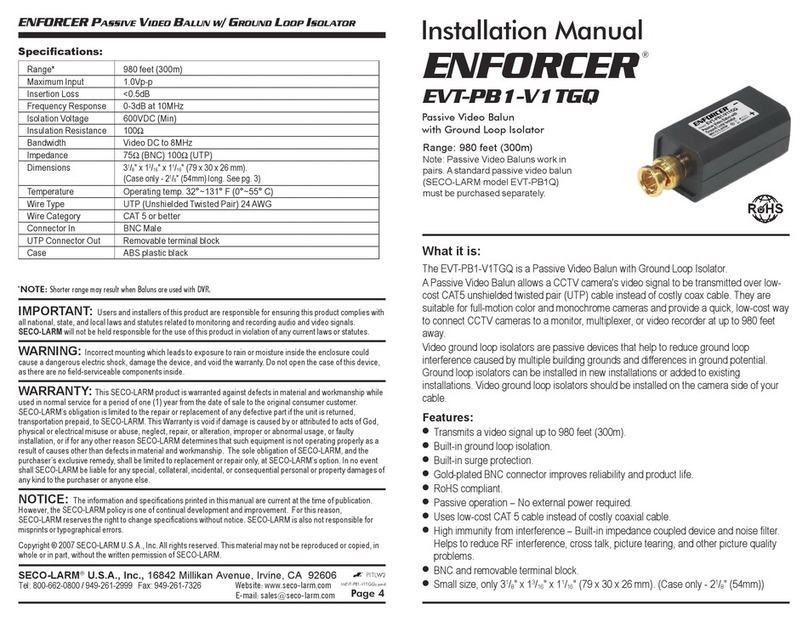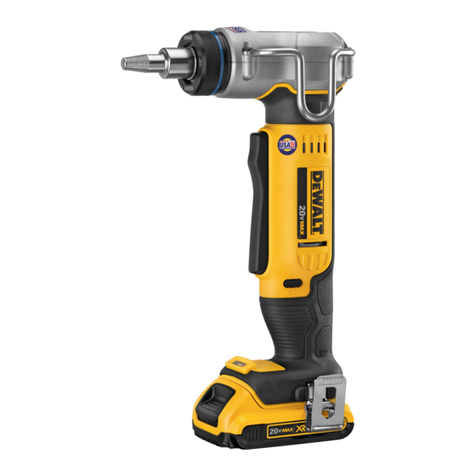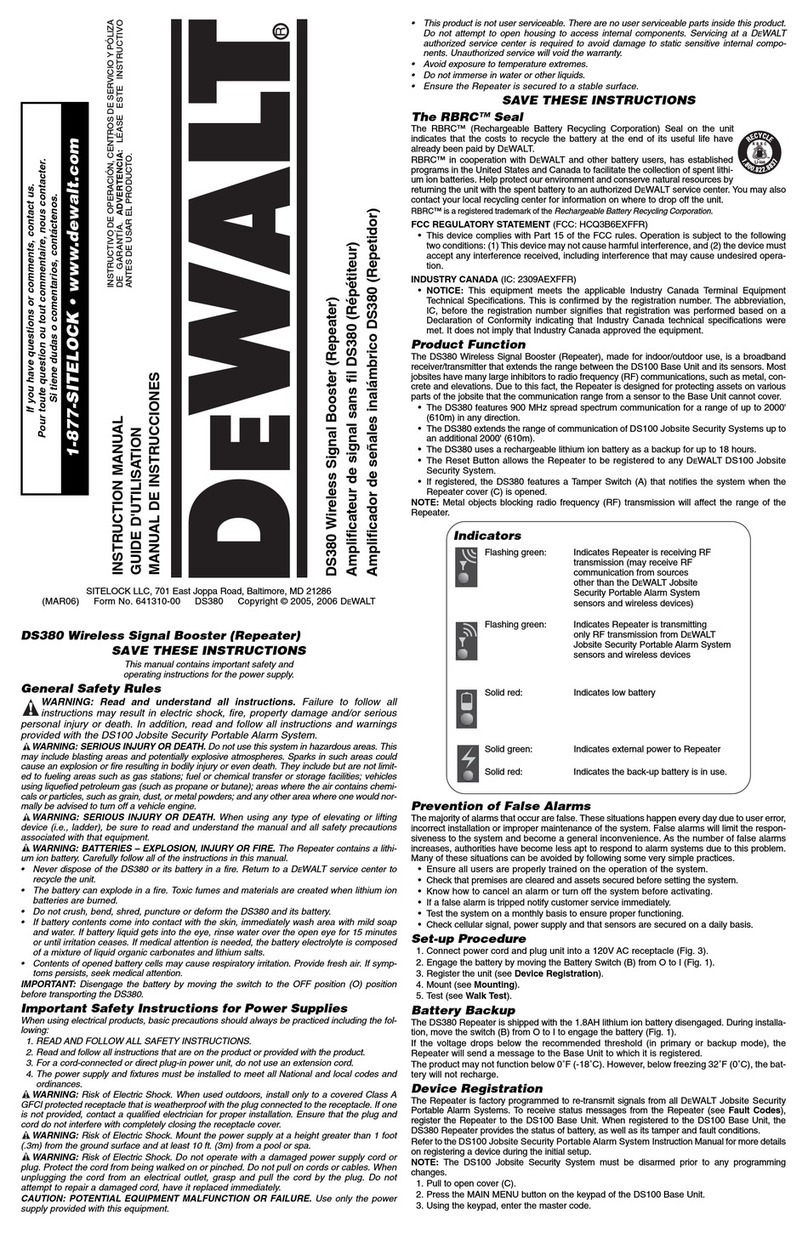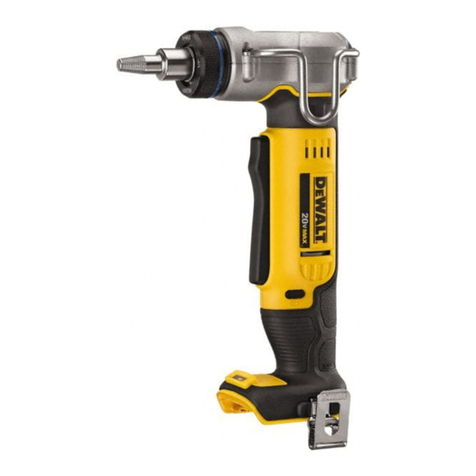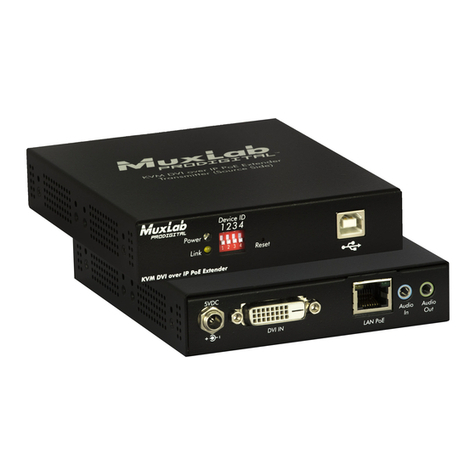
7
ENGLISH
The RBRC® Seal
Please take your spent battery packs to
an authorized DeWALT service center or
to your local retailer for recycling. In some
areas, it is illegal to place spent battery
packs in the trash. You may also contact your local recycling
center for information on where to drop off the spent
battery pack. Do not place in curbside recycling. For more
information visit www.call2recycle.org or call the toll-free
number in the RBRC®Seal.
RBRC® is a registered trademark of Call 2Recycle,Inc.
Shipping the DeWALT FLEXVOLT® Battery Pack
The DeWALT FLEXVOLT® battery pack has a battery cap that
should be used when shipping the batterypack.
Attach the cap to the battery pack to ready it for shipping.
This converts the battery pack to three separate 20V
batteries. The three batteries have the Watt hour rating
labeled“Shipping”on the battery pack. If shipping without
the cap or in a tool, the pack is one battery at the Watt hour
rating labeled"Use."
Example battery pack label:
USE: 120Wh SHIPPING: 3x 40Wh
In this example, the battery pack is three batteries with
40Watt hours each when using the cap. Otherwise, the
battery pack is one battery with 120Watthours.
Battery Pack Cleaning Instructions
Dirt and grease may be removed from the exterior of the
battery pack using a cloth or soft non-metallic brush. Do not
use water or any cleaningsolutions.
Fuel Gauge Battery Packs (Fig.B)
Some battery packs include a fuel gauge. When the fuel
gauge button is pressed and held, the LED lights will
indicate the approximate level of charge remaining. This
does not indicate tool functionality and is subject to
variation based on product components, temperature, and
end-userapplication.
Transportation
WARNING: Fire hazard. Do not store, carry, or
transport the battery pack so that metal objects
can contact exposed battery terminals. For
example, do not place the battery pack in aprons,
pockets, tool boxes, product kit boxes, drawers, etc.,
with loose nails, screws, keys, coins, hand tools, etc.
When transporting individual battery packs, make
sure that the battery terminals are protected and well
insulated from materials that could contact them and
cause a short circuit. NOTE: Li‑ion battery packs should
not be put in checked baggage on airplanes and must
be properly protected from short circuits if they are in
carry‑onbaggage.
• Do not charge or use the battery pack in explosive
atmospheres, such as in the presence of flammable
liquids, gases or dust. Inserting or removing the battery
pack from the charger may ignite the dust orfumes.
• NEVER force the battery pack into the charger. DO
NOT modify the battery pack in any way to fit into a
non-compatible charger as battery pack may rupture
causing serious personal injury. Consult the chart at the
end of this manual for compatibility of batteries andchargers.
• Charge the battery packs only in DeWALTchargers.
• DO NOT splash or immerse in water or otherliquids.
• DO NOT allow water or any liquid to enter batterypack.
• Do not store or use the tool and battery pack in
locations where the temperature may reach or
exceed 104°F (40°C) (such as outside sheds or metal
buildings in summer). For best life store battery packs in
a cool, drylocation.
NOTE: Do not store the battery packs in a tool with
the trigger switch locked on. Never tape the trigger
switch in the ONposition.
• Do not incinerate the battery pack even if it is severely
damaged or is completely worn out. The battery pack
can explode in a fire. Toxic fumes and materials are created
when lithium‑ion battery packs areburned.
• Do not expose a battery pack or appliance to fire or
excessive temperature. Exposure to fire or temperature
above 265°F (130°C) may causeexplosion.
• Follow all charging instructions and do not charge the
battery pack or appliance outside of the temperature
range specified in the instructions. Charging improperly or
at temperatures outside of the specified range may damage
the battery and increase the risk offire.
• If battery contents come into contact with the skin,
immediately wash area with mild soap and water. If
battery liquid gets into the eye, rinse water over the open
eye for 15minutes or until irritation ceases. If medical
attention is needed, the battery electrolyte is composed of a
mixture of liquid organic carbonates and lithiumsalts.
• Contents of opened battery cells may cause
respiratory irritation. Provide fresh air. If symptoms
persist, seek medicalattention.
• Battery liquid may be flammable if exposed to spark
orflame.
• Never attempt to open the battery pack for any
reason. If the battery pack case is cracked or
damaged, do not insert into the charger. Do not crush,
drop or damage the battery pack. Do not use a battery pack
or charger that has received a sharp blow, been dropped,
run over or damaged in any way (e.g., pierced with a nail,
hit with a hammer, stepped on). Damaged battery packs
should be returned to the service center forrecycling.
Storage Recommendations
The best storage place is one that is cool and dry, away
from direct sunlight and excess heat or cold. Store the fully
charged battery pack out of thecharger.

